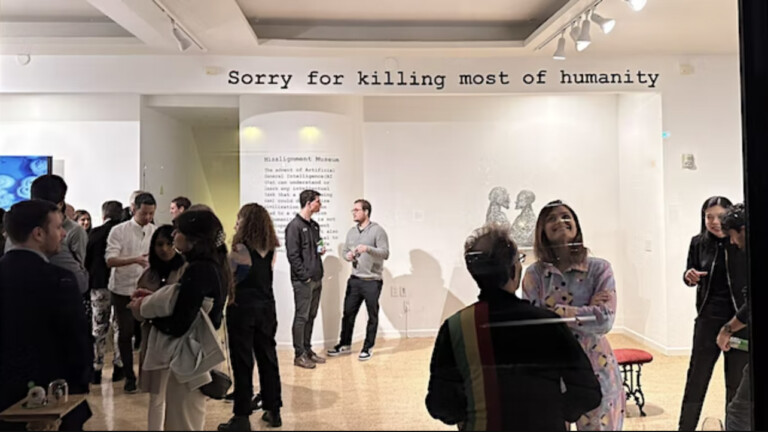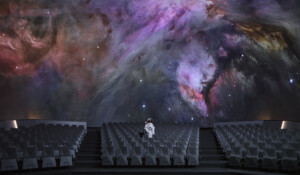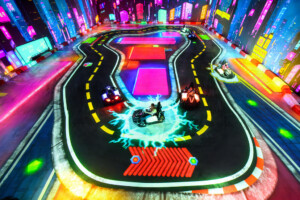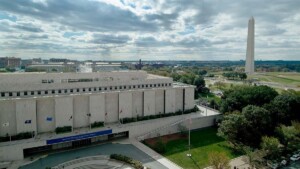A new art installation called the Misalignment Museum has opened in San Francisco, created to explore artificial intelligence’s (AI) potential for both good and bad.
One of the exhibits greets visitors by saying: “Sorry for killing most of humanity”, while another, called Spambots, creates an AI-generated version of the dystopian novel Brave New World by Aldous Huxley.
“The Misalignment Museum imagines a post-apocalyptic world where AGI has already destroyed most of humanity, then realizing this was bad, created this museum as a memorial and apology to the remaining humans,” explains the museum’s website.
“It is an art installation with the purpose of increasing knowledge about Artificial General Intelligence (AGI) and its power for destruction and good. Our goal is to created a space to reflect on the technology itself and think critically about Artificial Intelligence and its implications. Our hope is to inspire and build support to formulate and enact risk mitigation measures we can take to ensure a positive future as AI continues to develop, and in the advent of AGI.”
See also: Creating Ai-Da: the first ultra-realistic robot artist
Deeps fakes & dystopian nightmares
The installation is currently open until 1 May 2023, but the creators aim to make it a permanent exhibit. It is located within San Francisco’s Mission Neighbourhood.
The exhibition’s lower level is devoted to AI as a nightmare dystopia, where a computer running ChatGPT’s GPT-3 language model spits out insults to humanity, in cursive writing.
In the meantime, come take a selfie at the“Gates to Hell Selfie Spot” in the Misalignment Museum pic.twitter.com/pYvNY6TTVN
— Misalignment Museum (@MisalignmentM) March 12, 2023
Another exhibit features a fake discussion between two of Europe’s most renowned intellectuals, philosopher Slavoj Zizek and filmmaker Werner Herzog, created by AI. This is a meditation on deep fakes, a new kind of disinformation weapon. Deep fakes are images, sounds, or videos that pretend to be genuine individuals.
“There’s so much goodness this kind of tech can engender, so much suffering it can prevent, and then there’s the aspect of how much destruction it can cause and how much can get lost in that process,” Audrey Kim, the museum’s curator, told Wired.
The museum’s website adds: “We hope to elevate public discourse and understanding of this powerful technology to inspire thoughtful collaboration, appropriate regulatory environment, and progress towards a hopeful, vibrant future.”
Meanwhile, in Florida, the newly opened RoboLand is home to innovative robotic shows, virtual reality (VR) attractions, robotic animals, and more. One bot to appear at RoboLand, Sophia, is billed as the world’s most sophisticated humanoid robot. Powered by artificial intelligence (AI), Sophia has more than 70 facial expressions and can understand, recognise and research. She can also have conversations with visitors.
Image: Misalignment Museum














